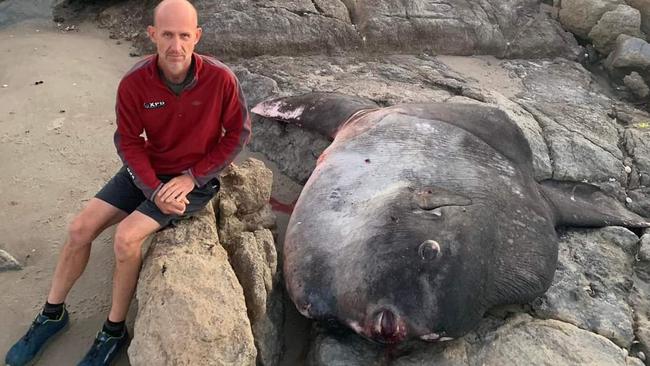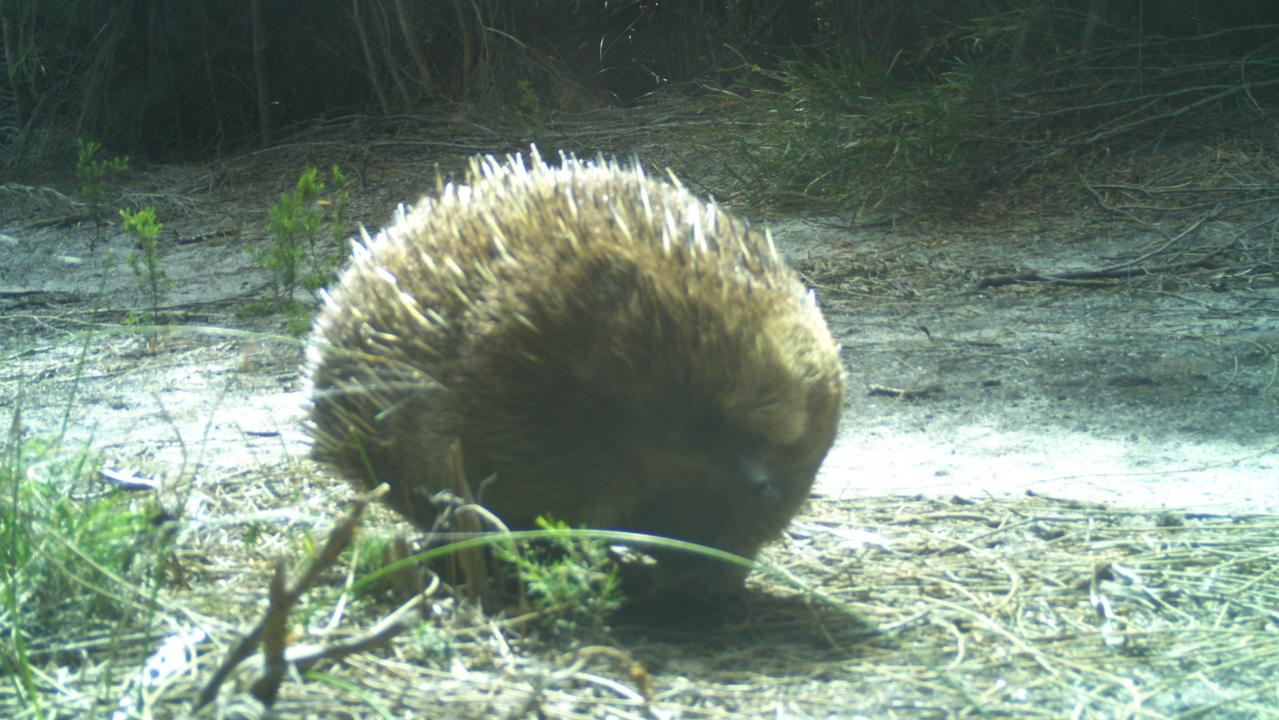St Helens Point: Walkers ‘blown away’ as sunfish washes ashore
Walkers in northeast Tasmania were gobsmacked to find one of the world’s biggest fish washed up on the rocks. A marine ecologist shares why it’s a “rare” encounter.
East Coast
Don't miss out on the headlines from East Coast. Followed categories will be added to My News.
A group of friends out for a walk in Tasmania’s northeast have come face-to-face with a bizarre creature from the deep, in an encounter a University of Tasmania marine ecologist says is “rare” on land.
St Helens resident Louise Foulkes said she was walking with her husband and friends about 5pm on Wednesday afternoon when they discovered an ocean sunfish, which she estimated to be up to 2.5m long, washed up on the rocks.
“From a distance we thought it was a seal,” she said.
“It was quite amazing.
“We have seen them reported on the news occasionally, but we were really shocked and surprised, we certainly never expected to see one there.
“We were blown away seeing one.”
The discovery comes just days after Dodges Ferry diver Chris Bakon came upon a live specimen in waters between Shipstern Bluff and Cape Raoul, filming the jaw-dropping encounter.
University of Tasmania Associate Professor Neville Barrett, who specialises in marine ecology and biodiversity, among other topics, said it was “rare” to see sunfish washed ashore as they typically preferred the clearer waters of the open ocean, where they feed on jellyfish and squid.
“There’s a lot of them out there but they’re rarely seen because they’re out there feeding in clearer waters, they don’t like murkier coastal waters,” he said.
Professor Barrett said sunfish could grow up to three metres and weigh more than two tonnes.
“You notice them when you run into them,” Professor Barrett said.

“As they feed near the surface, you see their dorsal fin flapping about, when I’ve seen them I’ve gone up to check them out as I’ve thought they were a shark.”
Interestingly, Professor Barrett said they are edible, although as they are related to the puffer fish, there is conjecture as to whether their organs are toxic.
“People are a bit wary of them but the flesh is fine,” he said, noting he had not personally tried it.
As to how the sunfish may have ended up on the rocks at St Helens Point, Professor Barrett advanced several hypotheses.
He said it could have just died of old age or disease, it could have been caught and discarded in a fisherman’s gill net, it could have been struck by a boat, or it could have ingested plastic bags, mistaking them for jellyfish.
While the inhabit all waters off Tasmania, able to endure temperatures as low as 10 degrees Celsius, Professor Barrett said sunfish are especially common in Norfolk and Frederick Henry bays east of Hobart.
While it was “unknown” why they were so common there, he hypothesised it was because they couldn’t find there way out through the bottleneck of Eagle Hawke Neck.





